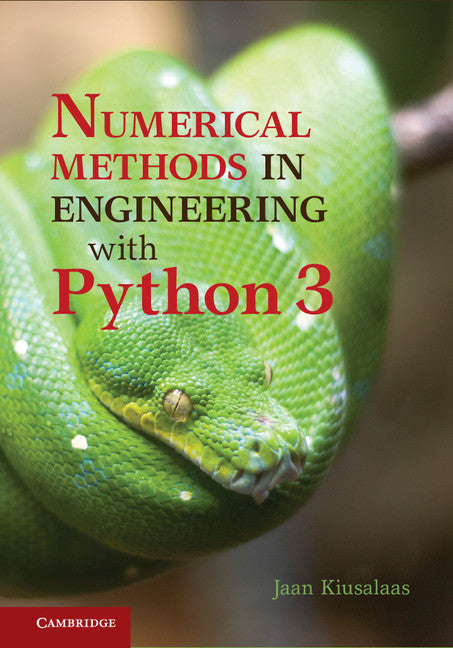Freshly Printed - allow 8 days lead
Couldn't load pickup availability
Numerical Methods in Engineering with Python 3
Provides an introduction to numerical methods for students in engineering. It uses Python 3, an easy-to-use, high-level programming language.
Jaan Kiusalaas (Author)
9781107033856, Cambridge University Press
Hardback, published 21 January 2013
432 pages, 31 b/w illus. 19 tables
25.7 x 18.3 x 2.5 cm, 0.93 kg
'This book is nicely focused on the most frequently encountered types of numerical problems that scientists and engineers usually face and the most common and robust algorithms for solving them. The text is just the right size for a semester-long course for upper-division undergraduates or first-year graduate students … this is a well-written text that is logically organized, attractively presented, and supported with challenging problems.' Anthony J. Duben, Computing Reviews
This book is an introduction to numerical methods for students in engineering. It covers solution of equations, interpolation and data fitting, solution of differential equations, eigenvalue problems and optimisation. The algorithms are implemented in Python 3, a high-level programming language that rivals MATLAB® in readability and ease of use. All methods include programs showing how the computer code is utilised in the solution of problems. The book is based on Numerical Methods in Engineering with Python, which used Python 2. This new edition demonstrates the use of Python 3 and includes an introduction to the Python plotting package Matplotlib. This comprehensive book is enhanced by the addition of numerous examples and problems throughout.
1. Introduction to Python
2. Systems of linear algebraic equations
3. Interpolation and curve fitting
4. Roots of equations
5. Numerical differentiation
6. Numerical integration
7. Initial value problems
8. Two-point boundary value problems
9. Symmetric matrix eigenvalue problems
10. Introduction to optimization.
Subject Areas: Software Engineering [UMZ], Computer programming / software development [UM], Environmental science, engineering & technology [TQ], Maths for engineers [TBJ], Numerical analysis [PBKS]


